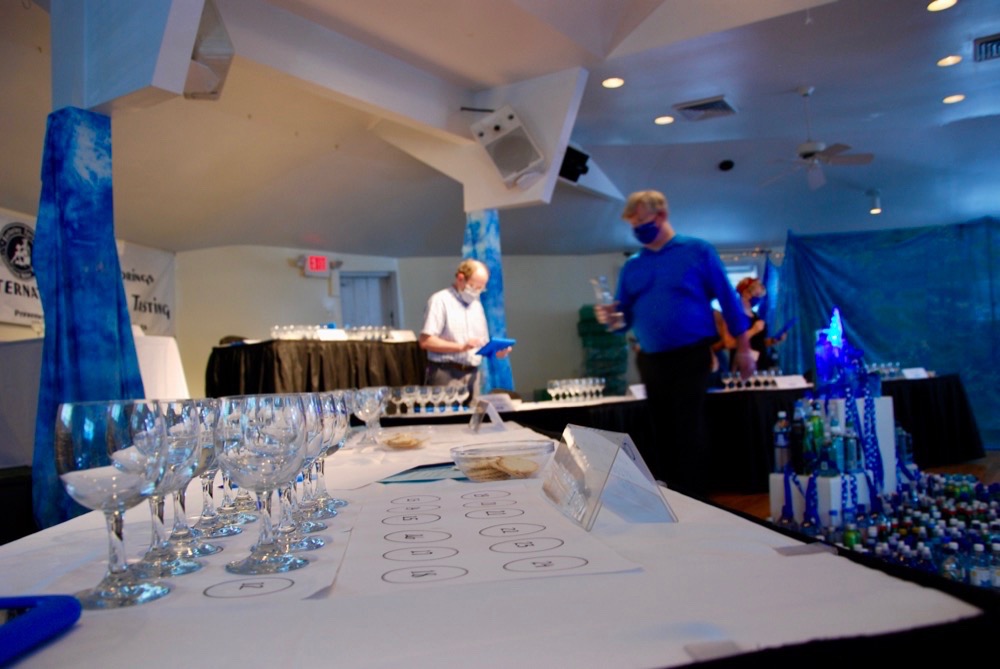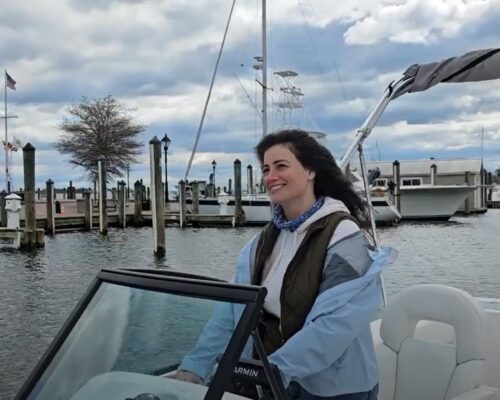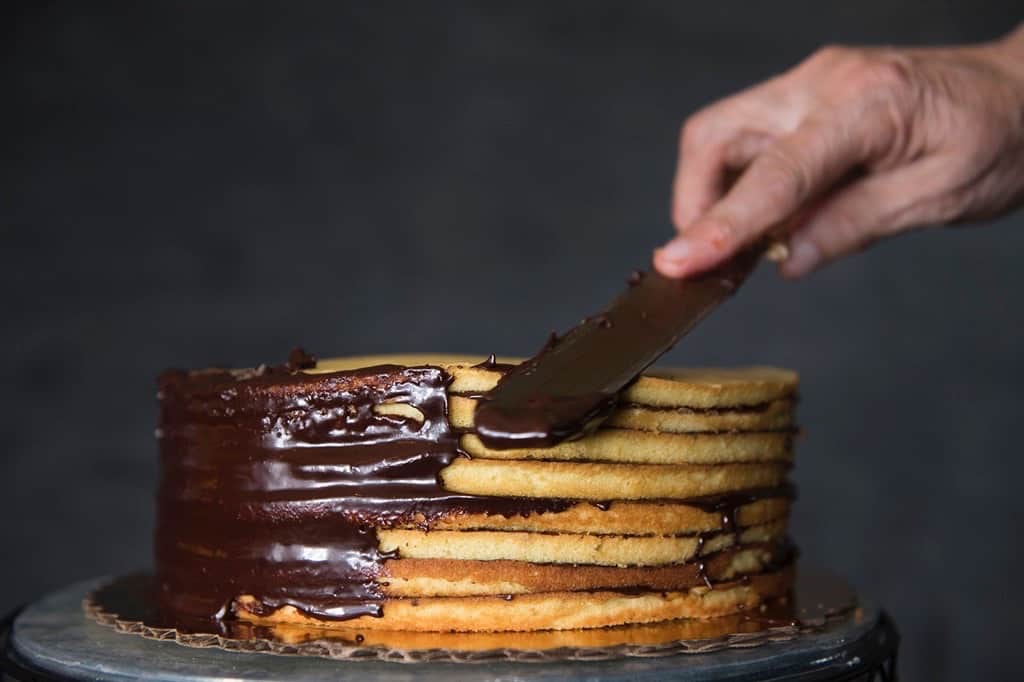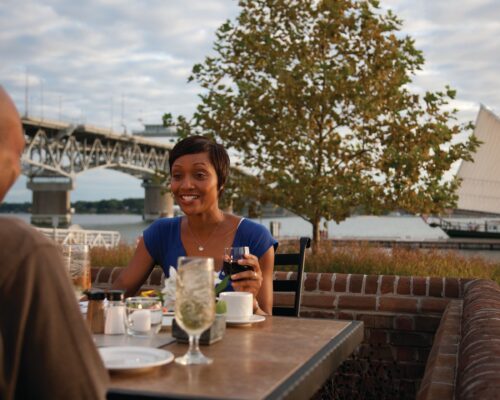Diving into the Olympics of water tasting
There’s a spot in West Virginia, about eight miles upstream of the Potomac River on Warm Springs Run, where clear water emerges from mineral-laden ground year-round at 74 degrees, pooling in natural rock formations. The “terroir” of the spring water here—its earthly provenance, as it steeps over time in geophysical forces that impart place-specific qualities—has drawn people for ages: the Native Americans first, then frontier-conquering colonists such as George Washington, and henceforth all who have come to immerse themselves in Berkeley Springs, the cultural center born of these waters that calls itself America’s “first spa town.” For 31 years running, it also has attracted entrants, judges, and fans of a world-famous event, the Berkeley Springs International Water Tasting, whose winners earn the rights to label their bottled or municipal waters among the world’s best to drink.
What started in 1991 as a novel way to promote the town has become, as the event’s co-founder and producer Jill Klein Rone likes to say, “the largest and longest-running water tasting in the world.” Entrants come not from familiar supermarket brands like Dasani or Fiji, but from water-producing locales that are striving for recognition in the $30-billion-and-growing global bottled water economy. In the world of distinctive “Adam’s ale” (a temperance-movement moniker for the only drink available to the biblical first man), this has become ground zero.
I first started frequenting the Berkeley Springs area in the years leading up to 2005, when I purchased a run-down cabin on a steep, overgrown acre by the nearby Cacapon River, believed to be the source of Berkeley Springs’ mineral water. My wife and I got married by that river, whose name is derived from a Shawnee word meaning “healing waters.” We lodged at the wedding suite at the Country Inn, the town’s centerpiece hotel, which hosts the annual water tasting. We live in Baltimore, raising two daughters, but one could say our “terroir” as a family has been forged by our experiences together down by the river and in town. And that includes the first time I was a judge at the water tasting, in February 2019, when the four of us stayed at a bed-and-breakfast and made the most of our two-night stay.
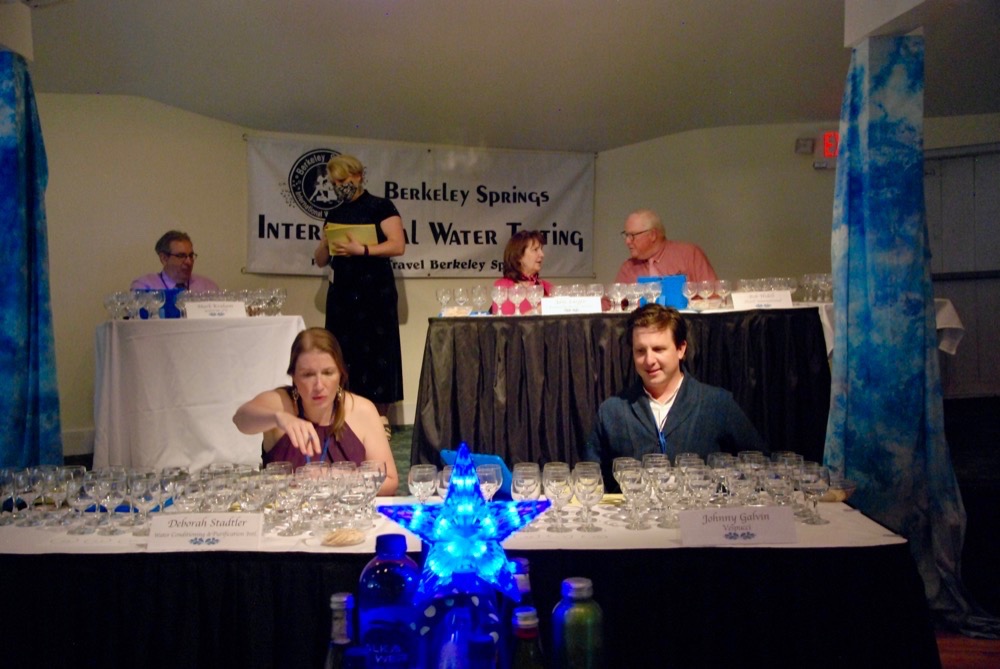
Judges prepared for tasting. A blue star commemorates long-time tasting organizer Jeanne Mozier, who passed away last year.
As I approached my first stint as a judge, I maintained a festive skepticism about the water tasting. I found it hard to believe that evaluating the taste of bottled waters could be a rational, sensible, systematic endeavor—surely, they’d be hard to tell apart from one another? Yet I was totally down to party with a globe-spanning group of hydrophiles in a celebration of drinking water. After all, who am I to judge? That I might be worthy to evaluate the waters at the tasting seemed a stretch. I need reading glasses to assay water’s clarity; years of coffee and spirits (and tobacco, until I finally quit) have desensitized my olfactory and gustatory receptors; and my wants in water are rather pedestrian: clear, cool, and crisp, preferably with bubbles. To me, noting the character of a water’s “terroir” would more likely come down to sensing whether it had been conveyed via a garden hose than whether it emerged, say, through beds of complex minerals in the foothills of the Italian Alps.
I kept my doubts to myself and surrendered to the judges’ training, overseen by the tasting’s water master, Arthur von Weisenberger, a California-based, Europe-trained bon vivant who’s been in the water-tasting business since the 1970s. We’d use a weighted ratings scale and attach numbers to six characteristics: appearance, odor, flavor, aftertaste, mouthfeel, and overall impression. The scores entered by the nine judges would then be tabulated, and the waters with the highest scores in each category—municipal water, bottled water, sparkling water, and purified water—would be the winners.
I proceeded to dutifully judge all the waters at that year’s tasting, and learned to my surprise that differences can be noted, and that some waters I actually did like better than others—and that buying the bottled waters that I ranked highest in the 2019 tasting would be an expensive undertaking, because they’re all from Tasmania. This detail convinced me that there really is something to this business of judging the taste of waters, since I’d blindly tasted scores and scores of waters from all over the world, and the ones I liked best turned out to be from the same tiny corner of the globe.
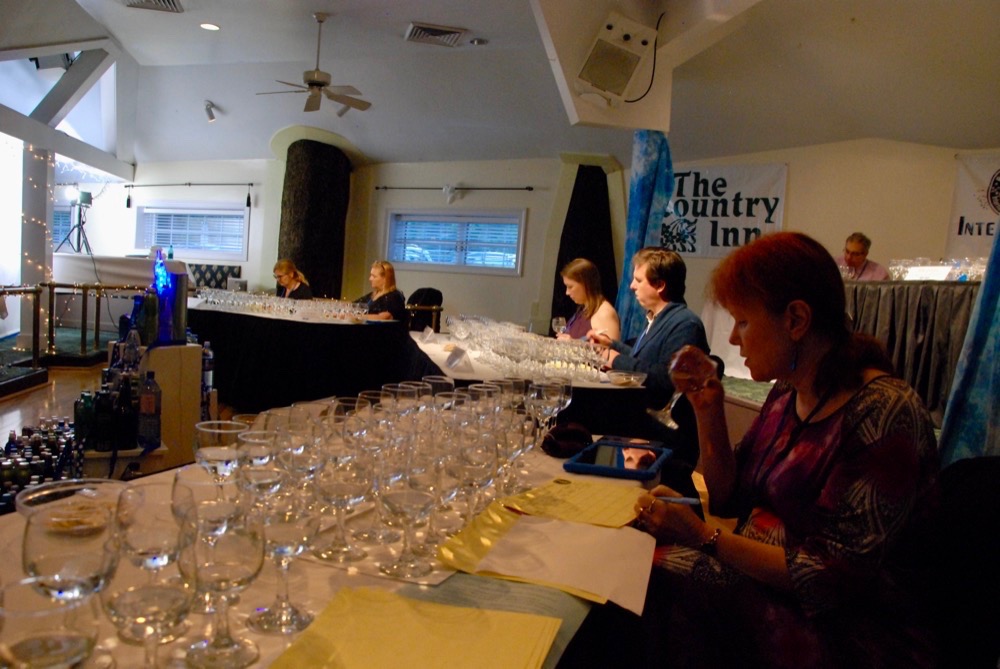
the world.
So I came back the next year, 2020, but not as a judge—instead, I came as a fan, and attended the water-related seminars that are always held the Friday afternoon before Saturday’s main event. Among the presenters
this time were the tasting’s co-founder Jeanne Mozier, a cultural force for Berkeley Springs since she first arrived in 1975, who held forth the healing history of the warm spring waters; a professor from Frostburg State University, Jonathan Flood, who discussed chemical analyses he’d conducted of Greece’s ancient healing springs; and Scott Shipe, a Maryland-based water advocate who rang alarm bells
over ubiquitous “forever chemicals” that are increasingly found in tap waters around the world. Clearly, having gained an official water-tasting certificate for learning at von Weisenberger’s knee, I was becoming a certifiable water geek.
In late 2020, about the time I’d normally start making plans to attend the tasting in February, my Facebook feed (which includes plenty of Berkeley Springs fare) delivered tragic news: Mozier had passed away at 75 years old. Jill Klein Rone and her daughter, Jules Happy Rone, soldiered on without her, postponing the event until June. Weeks before, Rone reached out to ask if I’d be available again to join the eight other judges (all of them, as always, members of the media). I jumped at the opportunity.
First thing in the morning at the cabin on June 5, the day of the tasting, I got into a pair of swim trunks while the coffee was brewing, drank a cup, and then took a refill to drink while soaking in the Cacapon. It was a cloudless, windless morning, with sunlight slicing here and there through the shade of the steep mountainside forest. I finished with the coffee and kayaked upstream to Edes Fort, a majestic promontory of rock rising about a hundred feet above the river. I glided quietly back downstream, watching a mother duck teach her ducklings to scoot away into the partially submerged branches of downed trees on the riverbank.
After disembarking and drying off, I donned a coat and tie, hopped into the pickup truck, and headed east on Route 9 through the little railroad town of Great Cacapon and up to the Panorama Overlook. I pulled over to take a look. Laid out below was an idyllic peaked landscape spanning three states—West Virginia, Maryland, and Pennsylvania—cut through by the Potomac and Cacapon rivers. Route 9 curved in hairpins through Cacapon Mountain for three more miles into
Berkeley Springs.
As I pulled into town, I was suddenly beset with uncertainty, trying to recall my 2019 training as I thought to myself, “Did von Weisenberger say judges should take no coffee on tasting day?” The water master himself dispelled my spoiled-palate worries, when we judges met him for lunch at Tari’s Cafe, an upscale-casual dining institution in Berkeley Springs. I was relieved to be reminded that we’re only asked to abstain from coffee
(or anything else that could alter our taste senses) for a few hours before serving as judges.
After lunch, we reconvened at the Country Inn’s Parkview Garden Room, a conference-and-wedding space notable for the three living trees around which the room was built. Training took about an hour. It started with von Weisenberger explaining the two-step process of getting bottled water.
“Some water is rainfall and snow melt, some of it comes from geysers, some of it comes from springs and creeks—from geothermal sources like we have right here in Berkeley Springs, even icebergs,” he said, “so the origins of water is the first step. The second step is what that water goes through before it ends up in a bottle. Most of the time it goes into the ground. The terroir is what gives water its character—those minerals, those trace elements are coming from rock strata, and those may be imparted into the water over eons. Sometimes water surfaces after five, 10, 15 years; other times it might be thousands of years.” The result, he said, “is like a fingerprint. No two natural waters are the same.”
Recalling the skepticism I’d had before the 2019 water tasting, I asked von Weisenberger if it might be best to reward the waters that failed to alert my senses at all?
“You’re using all your senses,” von Weisenberger replied. “Your goal is not to find anything that’s distracting or disagreeable. You don’t want to have anything that’s not pleasant, and if you find something that you see or you smell that you like, then you give it the scores you want. But then when you get into flavors, aftertaste, mouthfeel—all those are things that your senses pick up that they like a lot, or not.”
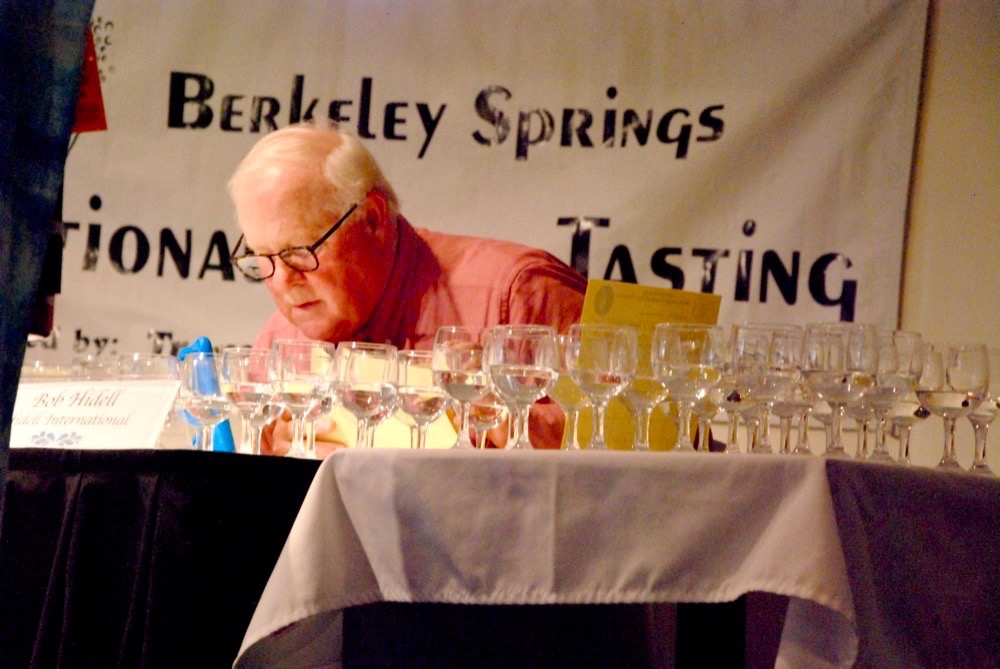
The judging system von Weisenberger teaches is derived from the one he employed in a 1980 tasting of San Francisco-area tap waters undertaken by the San Francisco Chronicle. “I went around with a reporter, and we collected these waters,” he recalled, “and we brought them to the Fairmount Hotel, and we put together a panel of judges, overseen by a man named Professor William Bruvald,” a professor of public health at University of California, Berkeley, who had developed a water-tasting system for NASA to evaluate “the acceptability of minerals in water for astronauts, as far as taste goes, because they wanted to find out how much they had to purify recycled water for drinking.”
The judges at the 1980 event were recruited from water-related occupations. “They had a SCUBA diver, someone who worked at an aquarium shop, a guy who was selling waterbeds,” von Weisenberger said. “The point was, when you sort of focus in on water, it doesn’t matter what background you come from, those differences in taste stand out.”
At the Berkeley Springs event, the judging goes on for hours. Thanks to the pandemic, the number of entrants this year was less than the 100-plus seen the past, but 13 municipal waters, 13 sparkling waters, 39 spring waters, and six purified waters from 19 states, three Canadian provinces, and 14 foreign countries still added up. We entered our scores on tablets, but also filled in paper forms in case of a technological malfunction. Every now and then, we nibbled on water crackers to replenish our palates.
The Parkview Garden Room was not as packed as it had been in prior years’ tastings, but the online viewership via a live Facebook feed added a new sense of worldwide interest in the event. For the first time, there was no “water rush” at the end of the event, when a display of hundreds of bottled waters is descended upon by the attending crowd, who are invited to grab as many cans and bottles as they can carry with them.
After all the tabulations, the 2021 winners were announced. Fuji no Tennensui Sarari from Japan’s Mt. Fuji won best bottled spring water; it is produced by Tokai Corporation, a Japanese company that has won numerous medals in past years. The top municipal water in the world went to Australia’s Rossarden, in Tasmania, while the U.S. winner was the Metropolitan Water District of Southern California, serving the Los Angeles region. Fleck Sparkling Mineral Water from New Zealand topped the list of bubbly waters, while the gold medal in purified waters went to Santa Barbara, Calif.’s Ophora Hyper-Oxygenated Water, which also won gold in 2018.
Worth mentioning among the purified winners, since it won the gold last year and is from the Chesapeake Bay watershed, is this year’s silver medalist: Waterfy Me of Gaithersburg, Md.
My duties now complete, I bought a bourbon from the Country Inn’s bar and hobnobbed with some of the judges. In light of being fully vaccinated, I considered doing something I haven’t done since before the pandemic: going to check out some live music, in this case at the Berkeley Springs Brewing Company. (I changed my mind, old fogey that I am, and went back to the cabin to sleep under the stars instead.) But first, as a judge, I was permitted to select some bottled waters to take home.
I chose five, based on my personal preference for non-plastic packaging: Kariba Premium Spring Water from Ontario, Canada, in a resealable can; Antipodes Natural Artesian Water from New Zealand, in a clear bottle; The Mountain Valley Spring Water from Hot Springs, Arkansas, in a screw-top aluminum bottle; The WaterWell Purified Water from Hopkinsville, Kentucky, in a resealable swing-top bottle; and Svalbardi Polar Iceberg Water from Norway (which is melted from iceberg’s freshly calved off of glaciers), in a clear bottle with a gift box.
Armed with a collection of five waters from three continents, I went home to Baltimore and decided to try von Weisenberger’s water-rating system on my two daughters, aged nine and 11; two neighborhood kids, aged nine and 12; and two adults (my wife, and the father of the other two kids).
I designed and printed up the judging forms, held a training session to walk them through the particulars, and filled six glasses for each judge—one for each of the five waters, and a sixth filled with Baltimore tap water.
The winner? Antipodes by far, with Svalbaldi coming in second. Antipodes costs about $10 a bottle, and Svalbaldi can command $150 per bottle, so there’s something about these precious waters that earned them accolades in the first-ever “Butchers Hill Neighborhood Water Tasting.” Baltimore tap tied for third with The WaterWell.
As von Weisenberger likes to say, “The consistency in winners from year to year with different panels of judges validates the choices” made by the water tastings. Even with kids as judges—because guess what? Antipodes won a gold medal at the Berkeley Springs International Water Tasting in 2018. There’s definitely something to this water-tasting business.

